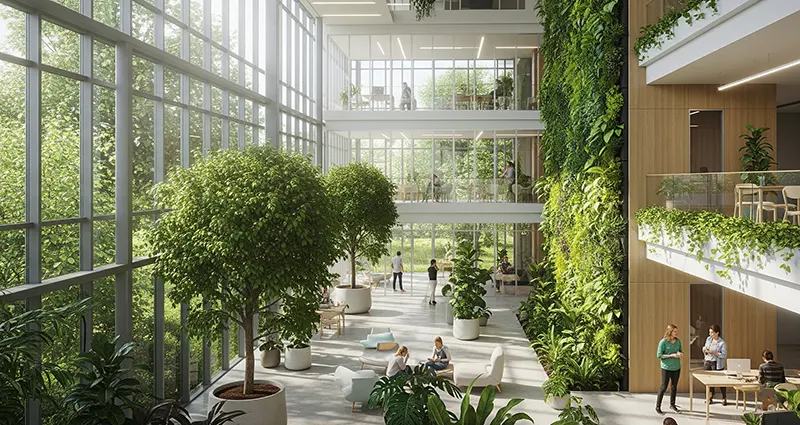In recent years, the focus on sustainable living has brought green architecture to the forefront of building design. Green architecture, also known as sustainable or eco-friendly architecture, incorporates environmentally responsible and resource-efficient practices throughout a building’s lifecycle. One of the most significant advantages of green architecture lies in its positive impact on indoor air quality and overall health. This article explores the key benefits of green architecture for indoor air quality and health, underscoring why it is an essential consideration for modern construction.
What Is Green Architecture?
Green architecture involves designing buildings that minimize environmental impact by optimizing energy efficiency, using sustainable materials, and enhancing occupant wellbeing. Core principles include natural ventilation, use of non-toxic materials, incorporation of plants and green spaces, and efficient HVAC systems.
How Green Architecture Enhances Indoor Air Quality
Indoor air quality (IAQ) is influenced by pollutants such as volatile organic compounds (VOCs), mold, dust, and carbon dioxide. Poor IAQ can lead to health problems including allergies, respiratory issues, and headaches. Green architecture improves IAQ through several mechanisms:
1. Use of Non-Toxic and Low-Emission Materials
Green buildings prioritize materials free from harmful chemicals and VOCs, which commonly off-gas from paints, adhesives, and furnishings in conventional buildings. This reduces airborne contaminants that can trigger asthma and other respiratory problems.
2. Improved Ventilation Systems
Effective natural and mechanical ventilation is a cornerstone of green design. By ensuring a steady exchange of fresh air and the removal of stale air, green buildings reduce the buildup of indoor pollutants and maintain oxygen levels, fostering a healthier breathing environment.
3. Incorporation of Indoor Plants and Green Spaces
Plants not only improve aesthetics but also enhance IAQ by absorbing carbon dioxide and releasing oxygen. Some indoor plants can also filter harmful pollutants, such as formaldehyde and benzene, improving air purity naturally.
4. Moisture Control and Mold Prevention
Green architecture incorporates moisture-resistant materials and design strategies that prevent water accumulation. This significantly reduces mold growth, a common indoor allergen and toxin, thereby improving health outcomes.
Health Benefits Associated with Green Architecture
By fostering superior indoor air quality, green architecture directly contributes to improved occupant health and wellbeing:
Reduced Respiratory Issues and Allergies
Lower levels of indoor pollutants mean fewer respiratory irritations, asthma attacks, and allergic reactions. Occupants of green buildings often report fewer instances of coughing, sneezing, and eye irritation.
Enhanced Cognitive Function and Productivity
Better air quality supports brain function, increasing alertness, concentration, and overall productivity. This is particularly valuable in workspaces and educational facilities.
Lower Stress and Improved Mental Health
Access to natural light, greenery, and fresh air within green buildings can reduce stress levels and support mental wellbeing, creating a serene and comfortable indoor environment.
Decreased Sick Days and Healthcare Costs
Healthier indoor environments lead to fewer illnesses, translating to reduced absenteeism and lower healthcare expenses for employees and residents.
The benefits of green architecture for indoor air quality and health are profound. By thoughtfully selecting materials, optimizing ventilation, and incorporating natural elements, green buildings create healthier and more comfortable living and working spaces. As awareness of environmental and health issues grows, green architecture stands as a critical solution for improving indoor environments and enhancing quality of life. Embracing sustainable building practices is not only good for the planet but essential for our own health and wellbeing.












